Do you remember the smell of grandma’s homemade apple pie? It was overwhelming when I walked into the house. I’d slow down just to take it in. There would be anticipation of what was to come. Looking back, the smell and anticipation of the taste was more gratifying than actually eating it. After that, the experience was over.
Have you ever watched your dog while you were cooking (especially B-A-C-O-N)? Their nostrils flare taking in the smell. They lick their lips. They are living that homemade pie right there in YOUR kitchen. But more importantly, they in that moment are DEEP BREATHING. They are getting a double whammy of “FEEL GOOD.”
Teaching Dogs to Take a Deep Breath
While we know it is very possible to teach our dogs to take deep breaths (and it is highly recommended), our human half takes over and we decide to do shake or spin because well that is way more fun and entertaining, right? In all seriousness, teaching your dog to take a breath on cue and ultimately to choose this behavior in a setting of concern is a terrific idea. Dr. Karen Overall’s Protocol for Deep Breathing is the document to follow!
Luring a Deep Breath
With fireworks imminent, having our dogs be able to take a deep breath would be amazing! So, how can we get a deep breath when it hasn’t been taught? How can we get a deep breath when we can’t even get any other cued behavior because our pup is too stressed? By luring it with food! Hold some extra yummy food in your hand. THIS IS THE TIME TO BRING OUT THE BIG GUNS… think bacon, sardines, liverwurst, anything that would stink you out of the place. Many dogs might not be able to focus on the food, but just having it in the environment during fireworks may be beneficial. Sniffing things after all is reinforcing to most dogs (especially hounds) and could be used in making a good association.
Alternatively, you can scatter the food on the floor allowing your dog to engage in the activity of sniffing. But, just a word of caution don’t scatter bacon or other greasy stinky food on carpet. You’ll be hating me in the morning.
Reward (reinforce) the Breathing
Don’t forget to offer tiny bits of the yummy stuff once your dog engages with your hand. Tiny bits are key… we really want to drag out this experience (of eating and breathing in the wonderful smell) not like when we woofed down grandma’s apple pie!
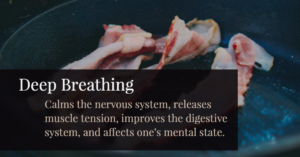 So Why a Deep Breath?
So Why a Deep Breath?
Have you ever been in a tense situation? If you took a deep breath, how did you feel after? Taking a deep breath calms the nervous system, releases muscle tension, improves the digestive system, and affects the dog’s mental state.
If your dog can’t focus…
Don’t get frustrated if your dog can’t take a breath when food is presented. Yes, I meant can’t instead of won’t, because your dog is experiencing a very unpleasant and often panic inducing event. If you’ve ever experienced a panic attack, you’ll understand the feeling of knowing it’s irrational but not being able to change your own feelings.
Your veterinarian can help.
This won’t be the end all be all fix right now. We are just talking things we can do when it’s a little late for creating a better association to fireworks. If you have had a prior experience and know your dog can’t focus, speak to your veterinarian right away. There is still time to get an appointment with many and they may be able to provide some assistance to get your dog thru the fireworks.

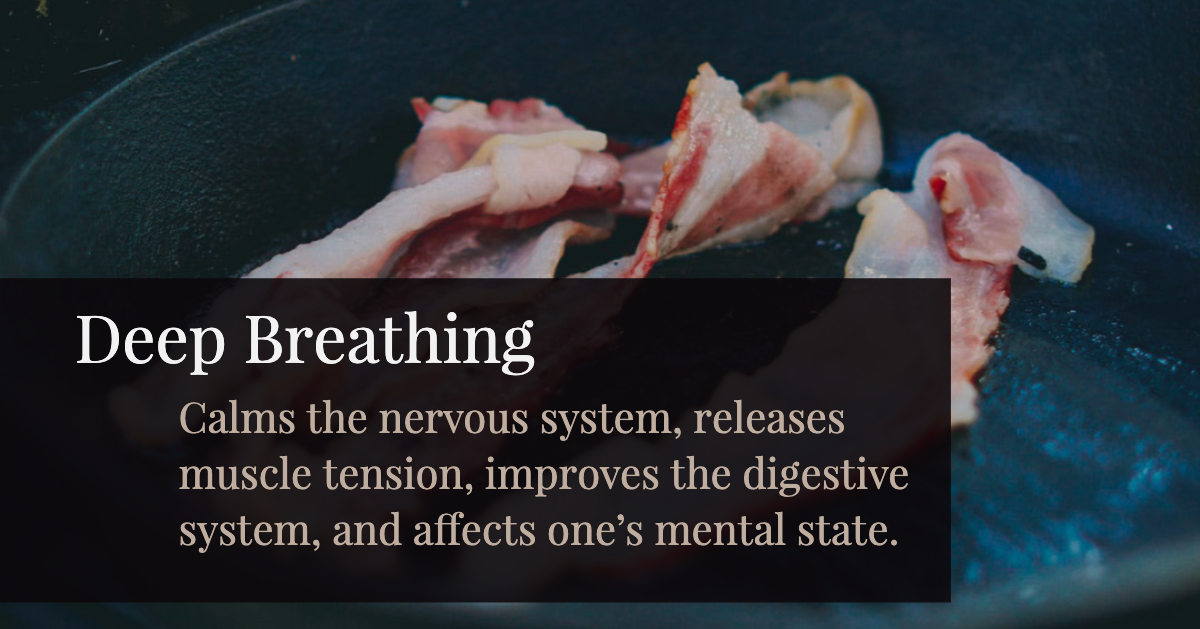

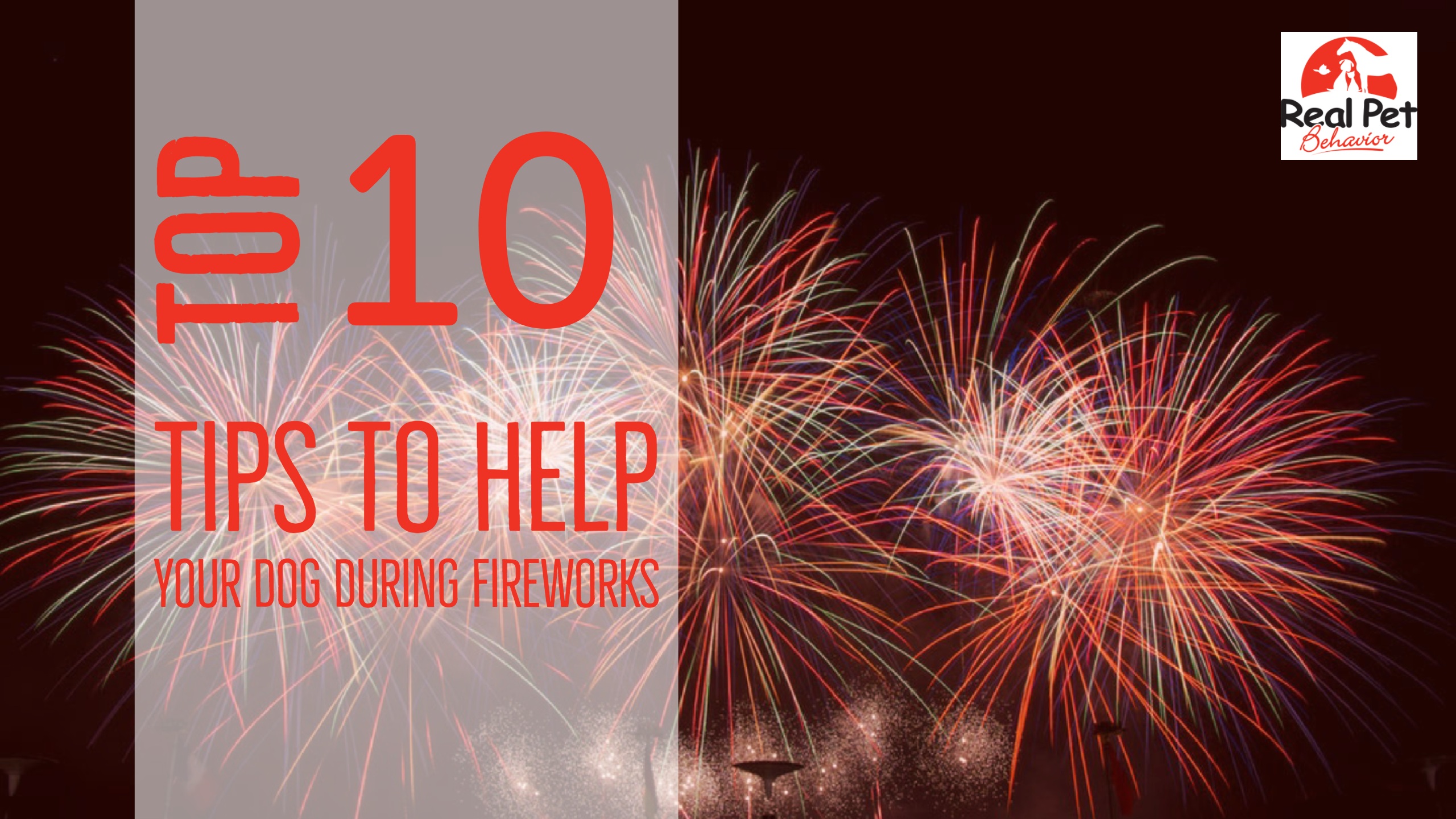 Fireworks can be scary for both dogs and cats. It never fails that on New Year’s Day and July 5th stories pop up in my Facebook feed notifying me of missing pets. When dogs get scared they try to get away from the scary thing. I wish they understood that getting out of their homes and yards is not in their best interest, but unfortunately they don’t. Cats tend to hide and we don’t necessarily know they are scared. It can take some indoor/outdoor cats several days to feel comfortable enough to come back home and unfortunately this could mean they are picked up by someone else. Here are our top 10 tips to help keep your pets safe and comfortable during fireworks (and thunderstorms).
Fireworks can be scary for both dogs and cats. It never fails that on New Year’s Day and July 5th stories pop up in my Facebook feed notifying me of missing pets. When dogs get scared they try to get away from the scary thing. I wish they understood that getting out of their homes and yards is not in their best interest, but unfortunately they don’t. Cats tend to hide and we don’t necessarily know they are scared. It can take some indoor/outdoor cats several days to feel comfortable enough to come back home and unfortunately this could mean they are picked up by someone else. Here are our top 10 tips to help keep your pets safe and comfortable during fireworks (and thunderstorms).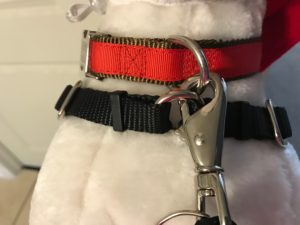
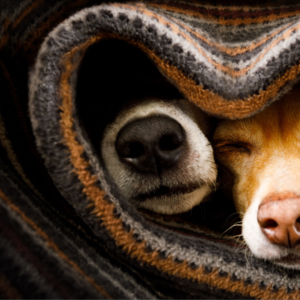 During a thunderstorm, blankets can be one of the most useful tools to have on hand. They can serve multiple purposes and can save you a lot of money if you have a dog that is in such a panic they dig at drywall or flooring. Many people have spare bedspreads or moving blankets laying around and these are the types I most often recommend. Moving blankets are thick and work well for both noise dampening and darkening a room, but they also tend to stand up well to chewing and digging. Bedspreads are often weighted which can help increase comfort and allow for some great burrowing. If you don’t have either, don’t worry any blanket will do. With that said, I don’t recommend your grandmother’s antique handmade quilt.
During a thunderstorm, blankets can be one of the most useful tools to have on hand. They can serve multiple purposes and can save you a lot of money if you have a dog that is in such a panic they dig at drywall or flooring. Many people have spare bedspreads or moving blankets laying around and these are the types I most often recommend. Moving blankets are thick and work well for both noise dampening and darkening a room, but they also tend to stand up well to chewing and digging. Bedspreads are often weighted which can help increase comfort and allow for some great burrowing. If you don’t have either, don’t worry any blanket will do. With that said, I don’t recommend your grandmother’s antique handmade quilt.